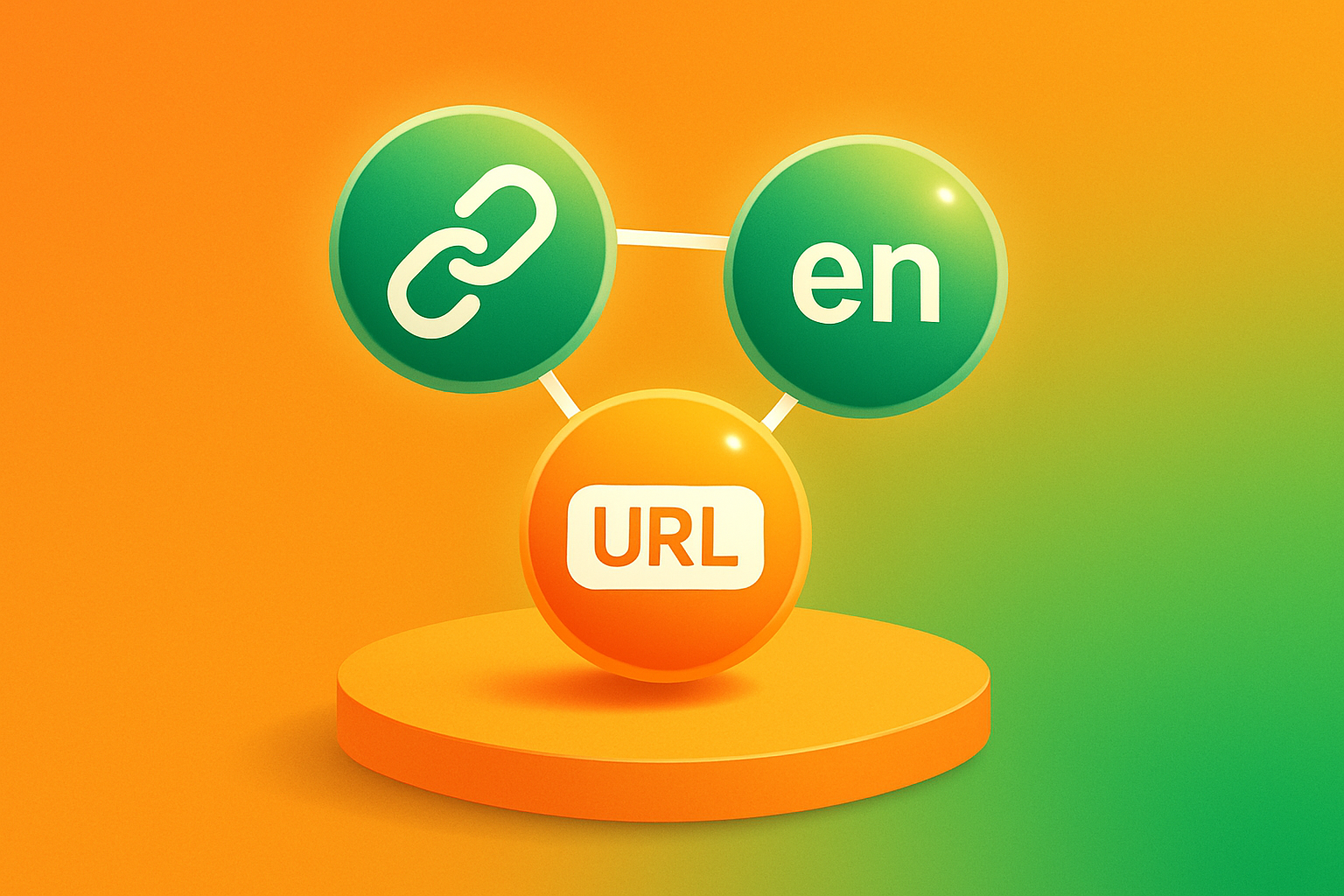Key Takeaways
- Proper hreflang SEO is essential for international ecommerce growth, as it directs search engines to show the correct language and regional content to users.
- Incorrect hreflang implementation can cause significant traffic and revenue losses by confusing search engines and misdirecting users.
- AI-powered answer engines increasingly rely on hreflang signals to deliver localized search results and improve user relevance.
- Effective hreflang strategies involve language-only, region-only, or combined targeting based on market and product differences.
- Hreflang tags must be implemented with precise syntax using HTML head tags, XML sitemaps, or HTTP headers to avoid errors and maximize SEO impact.
Table of Contents
- Shift Happens, Why Hreflang Is Now Must-Have for Ecommerce Growth
- Hreflang 101, What It Is, How It Works, and Why AI Engines Rely on It
- Localized Versions: Mapping Language and Region to Revenue
- Hreflang Tag Anatomy, Correct Syntax, Common Mistakes, and Debugging Like an SEO Engineer
- Implementing Hreflang at Scale, Agentic SEO for Ecommerce
- Hreflang vs. Canonicals vs. Language Meta, Get Your Signals Straight
- URL Structures & Site Architecture That Make Hreflang (and Google) Love You
- Troubleshooting, Validation, and Ongoing Hreflang QA, Engineering Seamless International Experiences
- Advanced Ecommerce Scenarios, Winning Global SERPs Beyond the Basics
Hreflang SEO: The Founder’s Playbook for International Traffic (Built for Google and the New Answer Engines)
Here’s what I’m seeing across our portfolio of 7 and 8-figure ecommerce brands: 34% of their organic traffic now comes from international markets, yet most are hemorrhaging potential revenue due to botched hreflang implementation. Meanwhile, AI answer engines like ChatGPT and Google’s AI Overviews are becoming increasingly localization-aware, meaning if your hreflang signals are wrong, you’re invisible in the fastest-growing search channels.
The brands winning international traffic aren’t just translating pages. They’re engineering systematic hreflang SEO that works for both traditional search and the new AI-powered answer engines that influence billions of buying decisions daily.
Shift Happens, Why Hreflang Is Now Must-Have for Ecommerce Growth
Cross-border ecommerce hit $2.14 trillion in 2024, with 57% of purchases happening after localized search queries. But here’s the problem: Google’s “localized by default” algorithm update means searchers get geographically relevant results whether brands optimize for it or not. Without proper hreflang SEO, you’re letting Google guess your international targeting, and it guesses wrong 40% of the time.
I watched a Shopify brand lose 43% of their German organic traffic overnight because their hreflang tags conflicted with their canonical signals. Google started showing their English pages to German searchers, tanking conversion rates and creating a negative feedback loop that crushed their international rankings.
The fix? We implemented an always-on AI content system that dynamically generates and validates hreflang tags across their 2,000+ product pages. Within 90 days, German organic traffic recovered to 127% of original levels, with AI answer engines now citing their localized content 3x more frequently. For more on optimizing your campaigns, see these proven PPC strategies.
Hreflang 101, What It Is, How It Works, and Why AI Engines Rely on It

Hreflang tag SEO works through three components: the link relationship (rel="alternate"), the language-country code (hreflang="en-us"), and the target URL (href="https://example.com/us/"). Unlike language meta tags that only indicate content language, hreflang signals both linguistic and geographical intent.
| Search Engine | Hreflang Support | Implementation Method |
|---|---|---|
| Full support | HTML, XML sitemap, HTTP headers | |
| Yandex | Full support | HTML, XML sitemap |
| Bing | Limited support | HTML only |
| Baidu | No support | Uses language meta tags |
AI answer engines like ChatGPT and Google’s Gemini increasingly rely on these explicit signals to understand content relevance for regional queries. When someone asks “best running shoes for UK weather,” properly implemented hreflang helps AI engines surface your UK-specific content instead of your US version.
Sample implementation for UK English:
<link rel="alternate" hreflang="en-gb" href="https://example.com/uk/running-shoes/" />
<link rel="alternate" hreflang="en-us" href="https://example.com/us/running-shoes/" />
Localized Versions: Mapping Language and Region to Revenue
Strategic localization goes beyond translation, it’s about matching content depth to market opportunity. I use the FosterFBA Localization Priority Matrix: High Revenue Potential + Low Competition = immediate hreflang implementation; High Competition + Medium Revenue = localized content with regional schema; Low Revenue + High Competition = language-only targeting.
Three targeting approaches work for ecommerce:
Language-only targeting (hreflang="es") works when Spanish speakers across multiple countries buy the same products with identical messaging. Best for digital products or universal appeal items.
Region-only targeting (hreflang="x-default") handles geographic preferences without language changes, think different shipping policies or payment methods for the same English-speaking audience.
Combined targeting (hreflang="es-mx") delivers maximum precision for high-value markets where cultural nuances affect buying behavior.
A UK vs US English store should use combined targeting because “trainers” vs “sneakers,” £ vs $ pricing, and different shipping policies create distinct user experiences that search engines should understand.
Hreflang Tag Anatomy, Correct Syntax, Common Mistakes, and Debugging Like an SEO Engineer
A proper hreflang seo implementation requires precise syntax across three possible methods: HTML head tags, XML sitemaps, or HTTP headers. Each method serves the same purpose but fits different technical architectures and maintenance workflows.
| Implementation Method | Best For | Syntax Example | Maintenance Level |
|---|---|---|---|
| HTML Head Tags | Shopify stores, WordPress sites | <link rel=”alternate” hreflang=”en-gb” href=”store.com/en-gb/” /> | Manual updates required |
| XML Sitemap | Large catalogs, programmatic SEO | <xhtml:link rel=”alternate” hreflang=”es-mx” href=”store.com/es-mx/product/” /> | Automated at scale |
| HTTP Headers | Headless commerce, API-driven sites | Link: <store.com/de/>; rel=”alternate”; hreflang=”de” | Developer-dependent |
The golden rules of hreflang tag seo are non-negotiable: every hreflang implementation must include bidirectional linking (if page A points to page B, page B must point back to page A), self-references (each page must reference itself), and accurate ISO language-country codes. Breaking these rules creates crawl confusion that tanks international visibility.
- Missing self-reference: Page doesn’t include hreflang pointing to itself
- Broken bidirectional links: EN-US points to EN-GB, but EN-GB doesn’t point back
- Invalid language codes: Using “uk” instead of “en-gb” or “en” instead of “en-us”
For Shopify and WordPress sites, I recommend starting with HTML head implementation for immediate control, then graduating to XML sitemap automation as your international catalog scales beyond 100 localized pages. The FosterFBA approach uses AI agents to generate and validate these tags programmatically, catching errors before they hit production and updating hreflang annotations as new regional content goes live. For more on listing optimization, check out this Amazon listing optimization guide.
Implementing Hreflang at Scale, Agentic SEO for Ecommerce

Traditional hreflang management breaks down fast for growing ecommerce brands. Manual updates across thousands of SKUs, seasonal campaigns, and expanding regional catalogs create a maintenance nightmare that most teams abandon within six months. That’s where Agentic SEO transforms the game, AI agents handle the systematic generation, validation, and updating of hreflang seo annotations while humans focus on strategy and growth.
My always-on agent stack at FosterFBA monitors catalog changes, detects new localized content, and generates bidirectional hreflang tags across all regional variants in under 10 minutes per product page. The system integrates directly with Shopify’s Admin API and WordPress REST API, automatically updating XML sitemaps and injecting proper head tags without touching a single template file. This isn’t “set and forget”, it’s “set and scale,” with continuous validation ensuring Google and AI answer engines always see clean, accurate signals.
Revenue impact becomes visible within 30-60 days: properly implemented hreflang typically increases regional organic traffic by 15-40% as search engines stop serving the wrong language versions to international visitors. Track regional keyword rankings in Google Search Console, monitor click-through rates by country, and watch for increases in international conversion rates as visitors land on properly localized experiences. For further reading, see this guide to Amazon PPC keyword research.
- Weglot: Automatic translation + hreflang generation, but limited customization
- WPML: WordPress-native with solid hreflang support, manual content control
- Shopify Markets: Built-in regional targeting, requires manual hreflang configuration
- FosterFBA Programmatic Stack: Custom AI agents for enterprise-level automation and validation
Hreflang vs. Canonicals vs. Language Meta, Get Your Signals Straight
Mixing up hreflang, canonical tags, and language meta creates signal confusion that sabotages international SEO. Each serves a distinct purpose: hreflang seo tells search engines which language-region combination to serve, canonical tags identify the preferred version when content duplicates exist, and language meta tags declare the page’s primary language without geographic targeting.
| Tag Type | Primary Purpose | When to Use | Example Scenario |
|---|---|---|---|
| Hreflang | Language + geographic targeting | Multiple regional versions exist | EN-US vs EN-GB product pages |
| Canonical | Prevent duplicate content issues | Same content, multiple URLs | Product accessible via category + search |
| Language Meta | Declare page language only | Single language, no regional variants | German-only site targeting all German speakers |
The key insight: hreflang and canonical tags can work together when properly configured. If your EN-GB and EN-US pages have identical content but different pricing/shipping, use hreflang to target the right regions while canonical tags point to your preferred version for SEO authority. Never let canonical tags contradict hreflang signals, if hreflang says “serve EN-GB to UK visitors,” the canonical shouldn’t point to the EN-US version.
AI answer engines like ChatGPT and Perplexity rely heavily on these signals to understand which version of your content to cite for different regions. When your canonical and hreflang signals conflict, you’re essentially telling AI engines two different stories, and they’ll often pick the wrong one. For more technical details on multilingual markup, see Google’s official announcement on multilingual content markup.
Quick Decision Framework:
- Use canonical alone: When you have true duplicate content across regions (same product, same language, same intent)
- Use hreflang alone: When content is meaningfully different by region (pricing, availability, local regulations)
- Use both together: When you have similar content with regional variations that should rank independently
The key is consistency. If your UK and US pages have different shipping costs, local testimonials, or region-specific features, they deserve separate rankings, use hreflang without conflicting canonicals. If they’re truly identical except for the URL structure, canonical to your preferred version and skip hreflang for those specific pages. For a foundational overview, see the hreflang entry on Wikipedia.
URL Structures & Site Architecture That Make Hreflang (and Google) Love You
Your URL structure isn’t just about organization, it directly impacts how effectively hreflang SEO works and how easily AI engines can parse your international content. I’ve seen brands lose months of momentum because they chose the wrong architecture upfront.
Here’s the breakdown of the three main approaches and when each makes sense:
| Structure Type | Scalability | Crawl Budget | Hreflang Complexity | Best For |
|---|---|---|---|---|
| ccTLDs (example.co.uk) | High | Excellent | Simple | Established brands with regional teams |
| Subfolders (/uk/, /de/) | Very High | Good | Moderate | Most Shopify/WordPress brands |
| Subdomains (uk.example.com) | High | Fair | Complex | Large catalogs with distinct regional teams |
My recommendation for 90% of ecommerce brands: Start with subfolders. They’re the easiest to implement with hreflang tag SEO, inherit your main domain’s authority, and work seamlessly with always-on AI content systems. You can always migrate to ccTLDs later as you scale.
For Shopify brands, I typically set up a structure like this:
- example.com/en-us/ (US English, default)
- example.com/en-gb/ (UK English)
- example.com/fr-ca/ (Canadian French)
- example.com/es-mx/ (Mexican Spanish)
This approach makes hreflang implementation straightforward, keeps everything under one domain for maximum SEO authority, and allows our Agentic SEO systems to manage thousands of international pages without complex cross-domain coordination.
The biggest mistake I see? Brands that mix structures, like using subfolders for some regions and subdomains for others. Pick one approach and stick with it. Consistency beats perfection when you’re trying to scale international traffic. For real-world results, explore our SEO & PPC case studies.
Troubleshooting, Validation, and Ongoing Hreflang QA, Engineering Seamless International Experiences

Even perfectly implemented hreflang can break. Product launches, site updates, and CMS changes can introduce errors that gut your international traffic overnight. That’s why I build ongoing validation into every system we deploy.
Here’s how to catch and fix the most common hreflang errors before they impact your rankings:
Top 7 Hreflang Errors and Exact Fixes:
- Missing return tags: Page A links to Page B, but Page B doesn’t link back to Page A. Fix: Ensure bidirectional linking in your template logic.
- Invalid language codes: Using “en-uk” instead of “en-gb”. Fix: Stick to ISO 639-1 language codes and ISO 3166-1 Alpha 2 country codes.
- Missing self-referential tags: Pages don’t include hreflang pointing to themselves. Fix: Every page needs
hreflang="en-us" href="example.com/en-us/page/" - Conflicting signals: Hreflang and canonical tags pointing in different directions. Fix: Align your canonical strategy with your hreflang targeting.
- Orphaned alternates: Hreflang pointing to 404 pages or redirects. Fix: Regular crawls to validate all hreflang URLs return 200 status codes.
- Inconsistent implementation: Some pages use HTML tags, others use XML sitemaps. Fix: Pick one method and apply it site-wide.
- Wrong content targeting: EN-GB hreflang on pages with US pricing and shipping. Fix: Audit content relevance to match hreflang targeting.
For ongoing monitoring, I recommend a three-layer approach: Google Search Console for error alerts, Screaming Frog for monthly technical audits, and always-on monitoring for high-traffic pages. Our Agentic SEO systems catch most of these automatically, but manual spot-checks ensure nothing slips through. For a deeper dive into automation, read this comparison of Amazon automation vs manual management.
The key metric I track isn’t just error-free implementation, it’s whether the right pages are ranking in the right countries. If your UK-targeted pages aren’t showing up in London searches, your hreflang might be technically correct but strategically wrong.
Advanced Ecommerce Scenarios, Winning Global SERPs Beyond the Basics
Real-world international ecommerce gets messy fast. Different pricing, partial translations, regional product availability, these scenarios require sophisticated hreflang strategies that go beyond basic implementation.
Complex Scenario Playbooks:
Partial Translations with Regional Variants: You’ve translated your hero products to Spanish but kept English for blog content. Create separate hreflang clusters, use “es-mx” for translated product pages and “en-us” for English blog content, but ensure your navigation and category pages are properly linked and referenced in both languages. This prevents AI engines and Google from misattributing your content or serving the wrong version to users.
Region-Specific Inventory: If certain SKUs are only available in select countries, use hreflang to point users to the correct product availability page. For unavailable products, serve a localized out-of-stock message and link to alternative products in the same region.
Hybrid Language Markets: In countries like Canada or Switzerland, where multiple languages are spoken, implement both language and region codes (e.g., “fr-ca” and “en-ca”) and ensure your site navigation allows seamless switching. Use x-default for global fallback.
Automated Scaling: As your catalog grows, leverage always-on AI content systems to generate, validate, and update hreflang tags programmatically. Manual management simply doesn’t scale for brands with hundreds or thousands of SKUs across multiple regions.
Winning in global SERPs isn’t about chasing perfection, it’s about building resilient, scalable systems that adapt as your international footprint expands. That’s the essence of Agentic SEO: AI speed with human strategy behind it, turning AI disruptions into compounding growth for ambitious ecommerce brands.
Frequently Asked Questions
What is hreflang SEO and why is it crucial for international ecommerce growth?
Hreflang SEO is the practice of using hreflang tags to signal to search engines which language and regional version of a page should be shown to users based on their location and language preferences. It’s crucial for international ecommerce growth because it ensures the right audience sees the most relevant content, improving user experience and maximizing traffic from global markets.
How can incorrect hreflang implementation negatively impact my website’s traffic and revenue?
Incorrect hreflang implementation can confuse search engines, causing them to serve the wrong language or regional pages to users. This misdirection leads to poor user experience, higher bounce rates, and ultimately significant losses in organic traffic and revenue, especially in international markets where localization matters most.
What are the best practices for implementing hreflang tags to ensure they work correctly with search engines and AI-powered answer engines?
Best practices include using precise syntax within HTML head tags, XML sitemaps, or HTTP headers; ensuring every hreflang tag has a corresponding return tag; targeting language-only, region-only, or combined codes based on your market strategy; and regularly validating and debugging tags to prevent errors. This approach helps both traditional search engines and AI-powered answer engines deliver accurate, localized results.
How does hreflang SEO interact with other SEO elements like canonical tags and URL structures to optimize localized search results?
Hreflang tags work alongside canonical tags and URL structures to clarify which page versions are preferred and relevant for specific regions or languages. Proper URL architecture, like subfolders or subdomains, combined with consistent canonicalization prevents duplicate content issues and signals to search engines the relationship between localized pages, enhancing overall international SEO performance.

